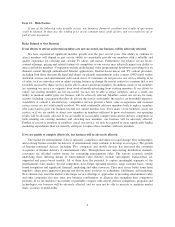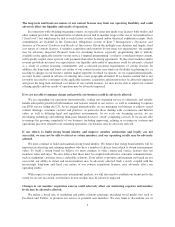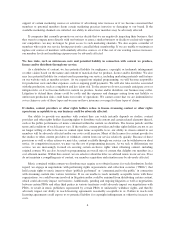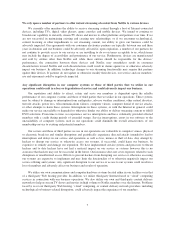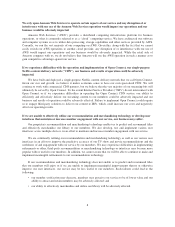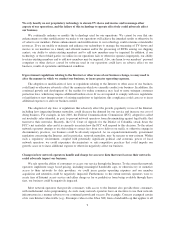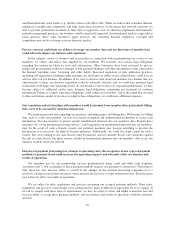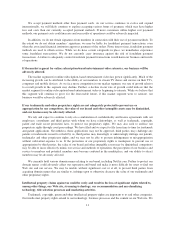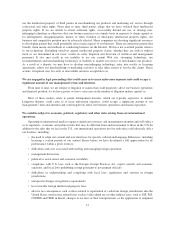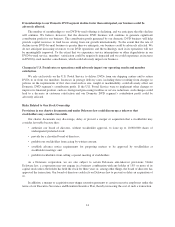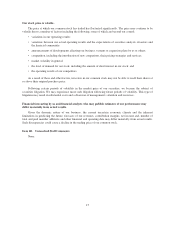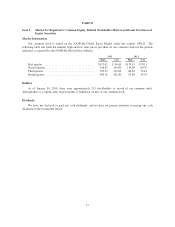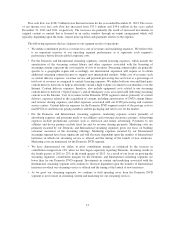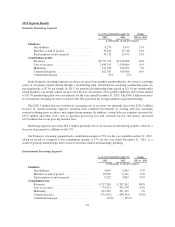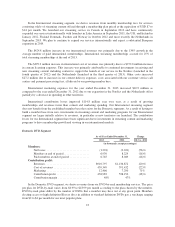NetFlix 2013 Annual Report Download - page 15
Download and view the complete annual report
Please find page 15 of the 2013 NetFlix annual report below. You can navigate through the pages in the report by either clicking on the pages listed below, or by using the keyword search tool below to find specific information within the annual report.in determining our global provision for income taxes and other tax liabilities given inter-company
transactions and calculations where the ultimate tax determination is uncertain;
• fluctuations in currency exchange rates, which could impact revenues and expenses of our international
operations and expose us to foreign currency exchange rate risk;
• profit repatriation and other restrictions on the transfer of funds;
• differing payment processing systems as well as consumer use and acceptance of electronic payment
methods, such as payment cards;
• new and different sources of competition;
• low usage and/or penetration of Internet connected consumer electronic devices;
• different and more stringent user protection, data protection, privacy and other laws; and
• availability of reliable broadband connectivity and wide area networks in targeted areas for expansion.
Our failure to manage any of these risks successfully could harm our future international operations and our
overall business, and results of our operations.
We may seek additional capital that may result in stockholder dilution or that may have rights senior to
those of our common stockholders.
From time to time, we may seek to obtain additional capital, either through equity, equity-linked or debt
securities. The decision to obtain additional capital will depend, among other things, on our business plans,
operating performance and condition of the capital markets. If we raise additional funds through the issuance of
equity, equity-linked or debt securities, those securities may have rights, preferences or privileges senior to the
rights of our common stock, and our stockholders may experience dilution.
We have issued debt offerings and may incur additional debt in the future, which may adversely affect our
financial condition and future financial results.
As of December 31, 2013, we had $500 million in 5.375% senior notes. Risks relating to our long-term
indebtedness include:
• requiring us to dedicate a portion of our cash flow from operations to payments on our indebtedness,
thereby reducing the availability of cash flow to fund working capital, capital expenditures, acquisitions
and investments and other general corporate purposes;
• limiting our flexibility in planning for, or reacting to, changes in our business and the markets in which
we operate; and
• limiting our ability to borrow additional funds or to borrow funds at rates or on other terms we find
acceptable.
We plan to obtain approximately $400 million in long term debt in the first quarter of 2014 and it is possible
that we may incur additional indebtedness in the future in the ordinary course of business. If new debt is added to
current debt levels, the risks described above could intensify.
We may lose key employees or may be unable to hire qualified employees.
We rely on the continued service of our senior management, including our Chief Executive Officer and co-
founder Reed Hastings, members of our executive team and other key employees and the hiring of new qualified
employees. In our industry, there is substantial and continuous competition for highly skilled business, product
development, technical and other personnel. We may not be successful in recruiting new personnel and in
retaining and motivating existing personnel, which may be disruptive to our operations.
13



